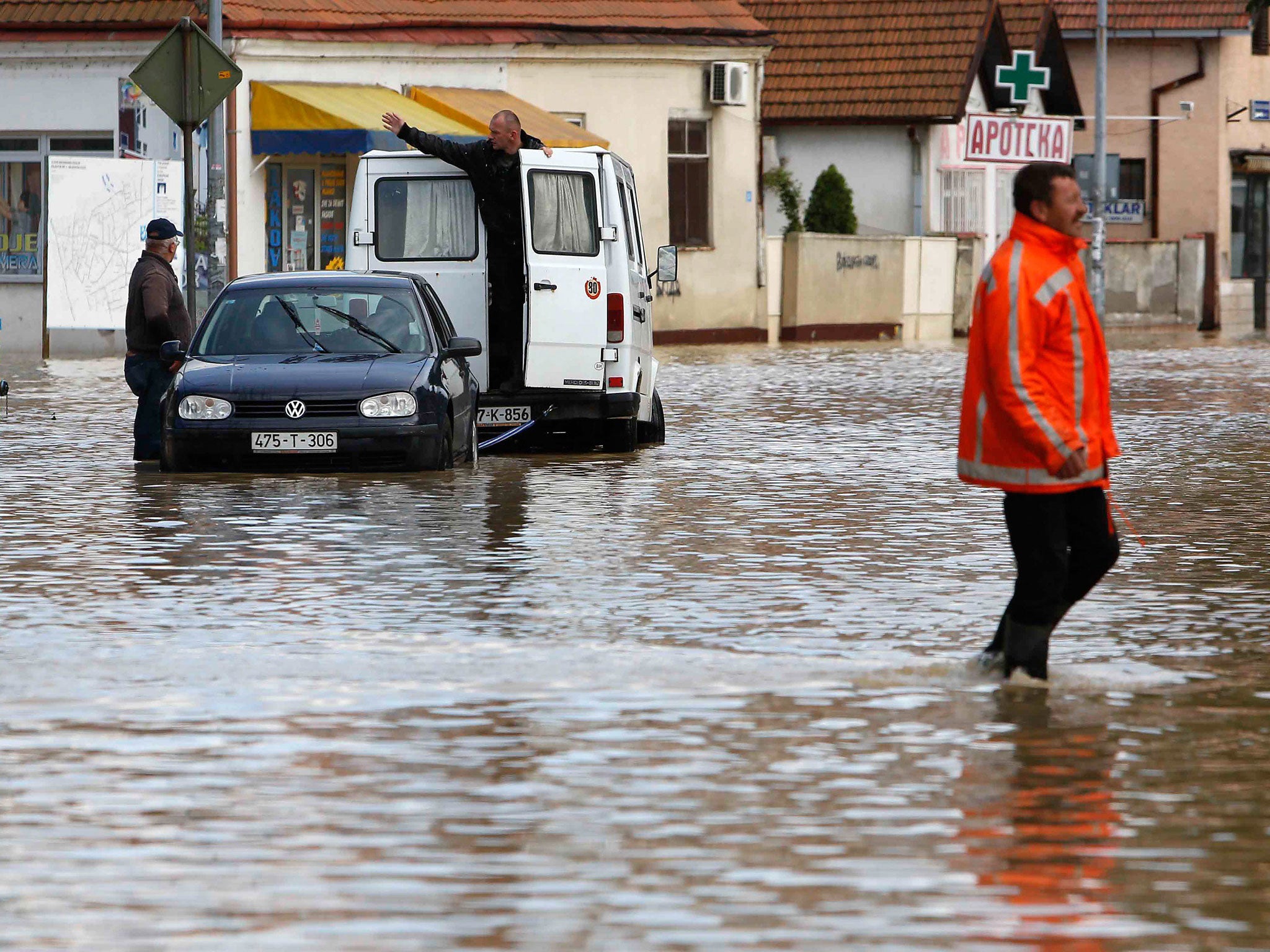Serbia and Bosnia floods: Worst floods to hit Balkans kill 40 and raise landmines threat

Your support helps us to tell the story
From reproductive rights to climate change to Big Tech, The Independent is on the ground when the story is developing. Whether it's investigating the financials of Elon Musk's pro-Trump PAC or producing our latest documentary, 'The A Word', which shines a light on the American women fighting for reproductive rights, we know how important it is to parse out the facts from the messaging.
At such a critical moment in US history, we need reporters on the ground. Your donation allows us to keep sending journalists to speak to both sides of the story.
The Independent is trusted by Americans across the entire political spectrum. And unlike many other quality news outlets, we choose not to lock Americans out of our reporting and analysis with paywalls. We believe quality journalism should be available to everyone, paid for by those who can afford it.
Your support makes all the difference.At least 37 people have died and tens of thousands left homeless in the worst flooding to hit the Balkans since records began.
Three months worth of rain fell in three days last week in Bosnia, Croatia and Serbia in a deluge described as catastrophic by government and emergency officials.
In Bosnia, a third of the country is under water, mostly in northern and eastern areas. A quarter of the four million population live in the affected areas.
At least 19 people have died in the flooding, which has also led to the displacement of landmines.
Heavy landslides have moved landmines and minefields from the 1992-95 war and warning signs at some nine thousands spots.
It is estimated that some 120,000 landmines remain in Bosnia. About 600 people have been killed by mines in the country since 1995.
Sarajevo Mine Action Centre official Sasa Obradovic said: “Besides the mines, a lot of weapons were thrown into the rivers, lying idle for almost 20 years.”
Croatia is also fighting to cope with the effects the flooding, with two confirmed deaths and earth walls being built along the Sava and Danube rivers.
In Serbia, 12 bodies were recovered in the flooded town of Obrenovac, about 20 miles South-west of the capital, Belgrade.
“What happened to us happens once in a thousand years, not hundred, but thousand,” Prime Minister Aleksandar Vucic said at a press conference yesterday.
“We have managed to avoid the worst catastrophe thanks to good organisation… The end is not close, but today is much better than yesterday.”
The countries stand along the Sava river. Its swollen tributaries made bridges disappear in minutes, while roads and railways were cut within hours. The tops of traffic signs were just visible yesterday under three or four metres of water.
The Sava is now threatening Belgrade, which lies at the confluence of the Sava and the Danube. River banks are being enforced and volunteers have stacked sandbags.
More than 24,000 people were evacuated from the hardest hit Serbian towns and are being accommodated in sports halls, hotels and schools, The EU and Russia have offered assistance.
“It doesn’t help that the sun shines today and that it’s warm outside,” said Natasa Marjanovic, 33, from Obrenovac. She and her two young children are staying at a sports hall in one of the Serbian capital’s suburbs.
“My heart is cold after what I’ve seen and what I’ve left behind” she added.
Subscribe to Independent Premium to bookmark this article
Want to bookmark your favourite articles and stories to read or reference later? Start your Independent Premium subscription today.
Join our commenting forum
Join thought-provoking conversations, follow other Independent readers and see their replies
Comments